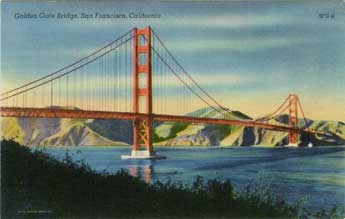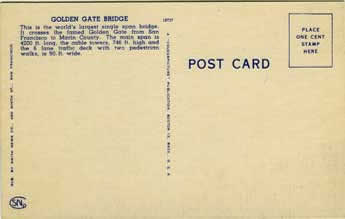Linen Postcards
1930–1945
Starting around 1930, a new printing process was introduced that could print picture postcards on a kind of card stock with a high rag content and a “linen” textured surface, with perpendicular, raised linear grooves, often in a grid, similar to the weave on a linen tablecloth. (Linen stocks are still around today.) This style quickly became popular and helped the postcard industry recover somewhat.


Many cards of the linen era have a wide, bright yellow border, or sometimes pale yellow or white. This author finds linen postcards the least appealing visually among all postcard eras. Photographs are often heavily retouched with thick, clumsy, dark lines, making images resemble crude black-crayon drawings. Colors can be especially garish. Color schemes often overemphasize primary colors, with buildings, automobiles, or people in crowds randomly depicted in bright blue, yellow, and red hues, as if in a paint-by-numbers manner.
However, some linen era postcards are attractive, such as the one pictured above of the Golden Gate Bridge. Notice the finely rendered watercolor- or air brush-like effects in the sky. Linen postcards are very popular today for their nostalgic charm, their depictions of roadside America in the early days of cross-country auto travel and their documentation of the American landscape during the Depression and pre-World War II years.
